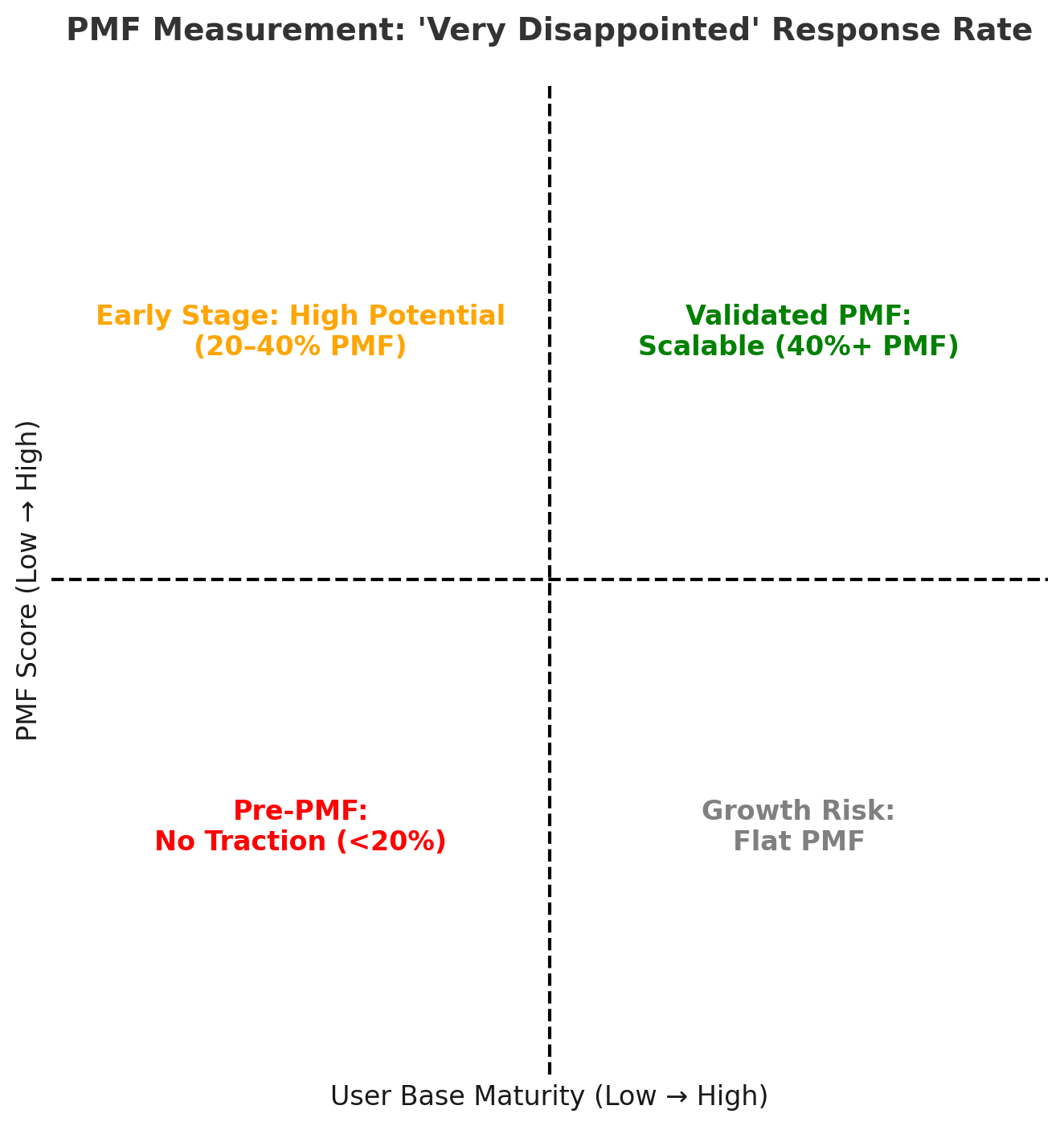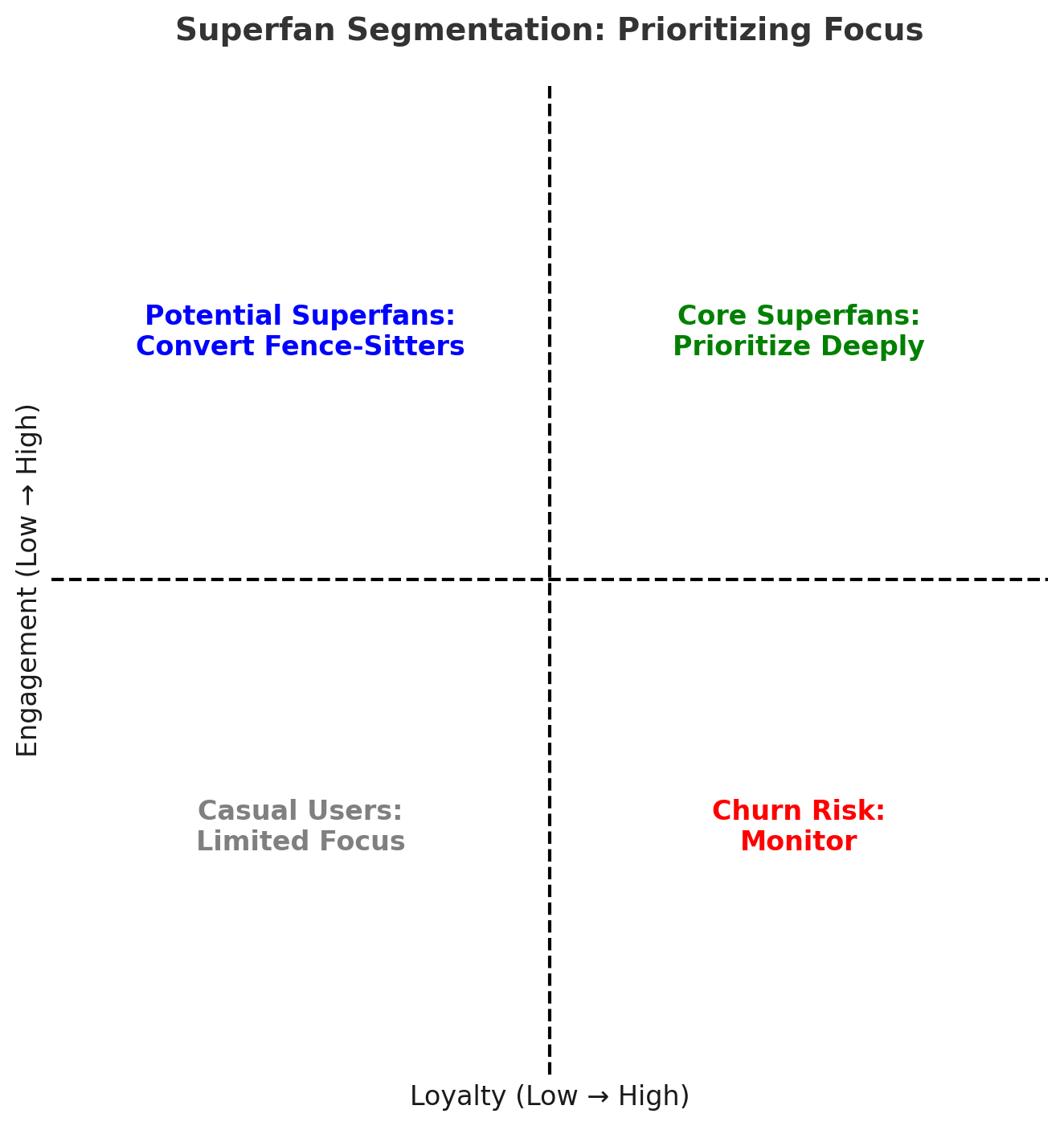Here’s What I Learned About Product-Market Fit from Superhuman’s Founder - Rahul Vohra
Product-market fit (PMF) isn’t a milestone. It’s a process.
It’s when your product goes from "good enough" to "can’t live without."
But here’s the truth: PMF doesn’t happen by accident. It’s built, tested, and optimized.
I recently studied Superhuman’s approach to building PMF, alongside insights from Sean Ellis, Marty Cagan, and Hiten Shah.
The common thread?
PMF is about understanding your users deeply, focusing on your strengths, and iterating relentlessly.
Let’s break it down.
1. The 40% Rule: Defining Product-Market Fit
Sean Ellis, who coined the term “growth hacking,” devised a simple but powerful benchmark for PMF:
“How would you feel if you could no longer use this product?”
The responses are segmented into three groups:
Very disappointed: These are your superfans—users who find your product indispensable.
Somewhat disappointed: Users who like your product but aren’t deeply attached.
Not disappointed: Casual users who won’t miss your product.
Ellis discovered that 40% is the magic number.
Companies with less than 40% “very disappointed” users struggled to grow.
Companies exceeding 40% often experienced strong traction and scalability.
Let’s make this real.
In 2015, Hiten Shah conducted an open survey of 731 Slack users. The result?
51% of users said they’d be very disappointed without Slack.
At the time, Slack had around half a million paying users. That score validated their PMF and set them on the path to becoming a household name.
Why does this matter? Because 40% isn’t just a number—it’s a diagnostic tool. It reveals how well your product solves a real problem for a specific audience.
Actionable takeaway:
Survey your users. If less than 40% of them would be very disappointed without your product, you’re not there yet. Use this as your guiding metric to measure PMF.
Not all users matter.
Some will like your product. Others will leave. But there’s one invaluable group: your superfans.
Superfans are your North Star. These are the users who love your product for what it already is.
Why does this matter? Because as a product manager, your priority is to build for those who care most deeply. Their needs define your core value proposition.
PM Tip: Start with a survey. Focus on users who would be very disappointed if your product disappeared. They are the foundation of PMF.
2. Start With Superfans: Let Data Guide Your Focus
Superhuman began their PMF journey with this same survey. Their initial results?
Only 22% of users said they’d be very disappointed without the product.
Instead of panicking, they got strategic. They focused on the 22%—their superfans.
These users held the answers to two key questions:
Why do they love the product?
What makes it indispensable to them?
Superhuman segmented their user base, zeroing in on this group,
and
ignored everyone else. Why?
Because building for superfans creates a ripple effect.
When you solve their problems deeply, you’re far more likely to create something that scales.
PM Tip: Superfans are your most valuable users. Analyze their feedback. Understand their needs. Build for them.
3. Define Your High-Expectation Customer (HXC): The Power of Personas
Superhuman didn’t just focus on superfans. They went a step further by defining their High-Expectation Customer (HXC).
How did they create their HXC? By asking this survey question:
“What type of person would most benefit from this product?”
User Persona → Their HXC was Nicole, a busy professional:
She’s an executive, founder, or business developer.
She manages 100–200 emails daily and sends 15–40 responses.
She values responsiveness but struggles with time management.
Here’s the insight: Happy users often describe themselves in their answers. By analyzing these responses, Superhuman crafted a persona that represented their most valuable users.
Why does this matter?
Because your HXC guides everything →
roadmap decisions,
marketing strategy, and
even design principles.
PM Tip: Your HXC is your North Star. Use customer data to define a persona that reflects the most demanding user in your market.
4. Balance Strengths and Gaps: Build What Matters
Product managers often face a dilemma:
Should you double down on what users already love?
Or should you fix what’s holding others back?
Superhuman balanced both with precision.
Superfans loved speed, keyboard shortcuts, and a clean UI.
Fence-sitters were held back by missing features, like the lack of a mobile app.
Superhuman’s roadmap reflected this balance:
50% of their efforts went toward enhancing strengths, like faster search and better automation.
50% addressed gaps, like building a mobile app and adding integrations.
This dual approach worked. It moved more users from →
“somewhat disappointed”
to
“very disappointed.”
PM Tip: Prioritize your roadmap into two buckets:
Features that enhance your product’s core value.
Features that remove blockers for fence-sitters.
5. Measure Relentlessly: Make PMF Your North Star
Superhuman treated their PMF score as the most important metric in the company.
Here’s how they tracked it:
They surveyed new users regularly (ensuring no repeat responses).
They updated their PMF score weekly, monthly, and quarterly.
They tied the score to team OKRs, making it a shared priority.
Their results?
- Initial PMF score: 22%.
- After one round of improvements: 33%.
- Within three quarters: 58%.
What does 58% mean? It’s far beyond the 40% benchmark, signaling a strong product-market fit.
Why does this matter?
Because PMF isn’t static. As you scale, your user base evolves, and expectations rise.
Continuous measurement ensures you stay ahead.
PM Tip: Adopt PMF as your North Star metric. Track it relentlessly. Build processes around improving it.
6. Iterate Continuously: Small Wins, Big Impact
Superhuman prioritized features using a simple cost-impact framework:
Low-cost, high-impact features (e.g., new keyboard shortcuts).
High-cost, high-impact projects (e.g., building a mobile app).
This approach ensured quick wins while delivering long-term improvements.
Here’s the bigger lesson:
PMF isn’t a one-time goal.
It’s a process. Each iteration brings you closer to a product users can’t live without.
PM Tip: Structure your roadmap around quick wins and big bets. Deliver value consistently while tackling long-term initiatives.
What Can We Learn From Superhuman’s Success?
Here’s the blueprint:
Start with data. Use the “very disappointed” survey to identify your superfans.
Define your HXC. Build for the persona that represents your ideal user.
Balance strengths and gaps. Delight superfans while addressing blockers.
Track PMF relentlessly. Make it your guiding metric.
Iterate endlessly. Prioritize based on cost and impact.
Final Thoughts: PMF Is a Journey, Not a Destination
Product-market fit isn’t guesswork.
It’s a process of listening, learning, and building.
Superhuman’s journey shows that focus, data, and relentless iteration can take you from 22% to 58%.
So, what’s stopping you?
Survey your users.
Segment your superfans.
Build your PMF engine.
Because when you achieve PMF, you don’t just have a product—you have a movement.






